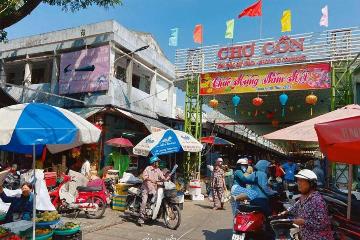In recent years, Vietnam has emerged as a focal point of global attention, particularly among Western nations that see the Southeast Asian country as the next manufacturing powerhouseThis burgeoning interest has led to a significant influx of investments from various countries, including many from ChinaThe comparison often made between Vietnam today and China from thirty years ago raises some eyebrows, as it oversimplifies the complexity of Vietnam’s current circumstances and advantages.
To understand why Vietnam can be seen as starting from a more advantageous position than China did three decades ago, one must consider the profound changes in the global economic landscapeThe integration of global capital and the zero-tariff economic policies have opened the Vietnamese market to an influx of foreign investmentsThis is not simply a matter of history repeating itself, but rather of Vietnam leveraging its unique position in the modern economy.
Historically, Vietnam’s economic model was deeply influenced by military governance advocating an agrarian-oriented economy
Advertisements
In contrast to today’s vibrant marketplace, early developments were focused on agricultural productionThe military had prioritized the exploitation of land resources, which transitioned from conventional farming to planting cash-rich crops such as rubber, tobacco, and coffeeThis strategic shift aimed to enhance economic yield through the establishment of integrated agricultural enterprises staffed primarily by military personnel.
However, it didn’t take long for the military leadership to recognize that the profitability of real estate development greatly overshadowed that of agricultural endeavorsConsequently, vast tracts of arable land were leased to real estate developers, marking a pivotal transformation in Vietnam’s economic strategyAlthough this model was somewhat successful in its early implementation, it gradually faltered over the years, leading Vietnam to shift its learning towards market-driven strategies modeled after China.
Recent reports suggest that foreign investors are beginning to express concerns about the sustainability of their investments in Vietnam
Advertisements
Factors such as potential tariff targets and issues surrounding corruption and the scarcity of skilled labor have prompted some companies to redirect their focus toward neighboring Southeast Asian nations or even return to ChinaThis pivot reflects an underlying dependency that Vietnam still has on Chinese materials and component supplies, revealing vulnerabilities in its manufacturing sector.
As we approach 2024, challenges loom for many enterprises operating in VietnamReports indicate that over 30,000 companies could face closure or operational difficulties solely within that yearThis trend sheds light on an uncomfortable reality that companies have begun to deal with; an increasing number are finding it difficult to thrive under the existing economic conditions.
The origin of these struggles can be traced back to the initial optimism surrounding Vietnam as a manufacturing hub
Advertisements
Corporations that once aimed to establish new production lines in Vietnam by deploying Chinese technical teams quickly realized that the anticipated transition of operations might need reevaluationDecisions made in the previous years to withdraw significant portions of their workforce and cut down production lines were driven largely by the disappointing skill levels in the local labor market.
The gap in skill proficiency is particularly alarming when comparing Vietnamese workers to those in even the smaller county-level cities of ChinaWhile labor costs remain lower in Vietnam, the persistent rate of production rejections due to unskilled labor has led to financial losses that overshadow any savings incurredConsequently, companies are rethinking their manufacturing strategies in Vietnam.
Additionally, the prospect of the United States raising tariffs on Vietnamese goods strikes another blow to the manufacturing sector
- Factors Influencing Energy Futures Market
- Trends in Financial Technology Development
- Trends in Capital Flows in Emerging Markets
- Meeting the Needs of Foreign Enterprises
- Applications of Supply Chain Finance
The loss of cost advantages that make Vietnam an attractive destination for production could quickly evaporate if these tariffs are implemented, plunging the manufacturing industry into a precarious situation.
Recent news highlights Vietnam's ongoing reliance on China, especially in infrastructure projects and urban developmentOn the 22nd of a recent month, Prime Minister Pham Minh Chinh inspected the Hanoi - Haiphong railway project, announcing its expected commencement by the end of 2025 and completion by the end of 2030. His emphasis on maintaining close communication and cooperation with China for the project's success draws attention to Vietnam's dependencies in terms of infrastructure development.
Investors, having studied Vietnam over an extended period, have come to recognize that while the country strives to mimic China's path of growth, significant gaps remain

These discrepancies are evident in the complete industrial system, stability of supply chains, technological innovation, as well as the overall skill level of the labor forceVietnam’s economy currently relies heavily on Chinese collaboration and support, showcasing a complex interdependence that shapes its industrial landscape.
In summary, while Vietnam possesses a unique potential to emerge as a formidable player in the global manufacturing arena, the journey ahead is fraught with challengesWith issues involving labor quality, governmental dependence, and emerging economic policies from major trading partners, the road to sustainability will require thoughtful strategies that navigate the dualities of opportunity and riskAs the world watches closely, it is apparent that Vietnam's economic ascent will be a story of trial, adaptation, and a search for identity amidst a rapidly changing global context.